Everything about Natture lime mortar: what it is, benefits and uses
Lime mortar is one of the most common in rehabilitation and restoration works, with special incidence in historic heritage buildings. And it is that lime is a construction material that was already famous in the 6th century BC. In fact, different researches Greece classical or the Roman Empire; as well as by the Mayans, Incas and Aztecs in America and by the first Chinese dynasties.
A material whose quality is beyond all doubt, having been demonstrated pertinently through the centuries. But, what exactly does it consist of? Why is it now in fashion? What are its most relevant properties? In this article we delve into and answer all these questions and, we also present, our Natture lime mortar. A high decoration coating with which we return to the origin to look at the future.
What is a lime mortar
Lime mortar is a mortar composed of lime, aggregates and natural additives. Depending on the particular formulation of each product, the lime used can be aerial or hydraulic. This composition gives the coating a bioclimatic character, that is, the support becomes very permeable allowing breathability without losing an iota of its waterproof capacity against water.
The lime of said mortar, which gives it its name, has the quality of hardening when exposed to air. A kind of solid film is created, with a stony appearance, which hardens first by the evaporation of the kneading water and, later, by the chemical modification that its components undergo. If it is a quality mortar, it will not deteriorate over the years, but will become increasingly consolidated.
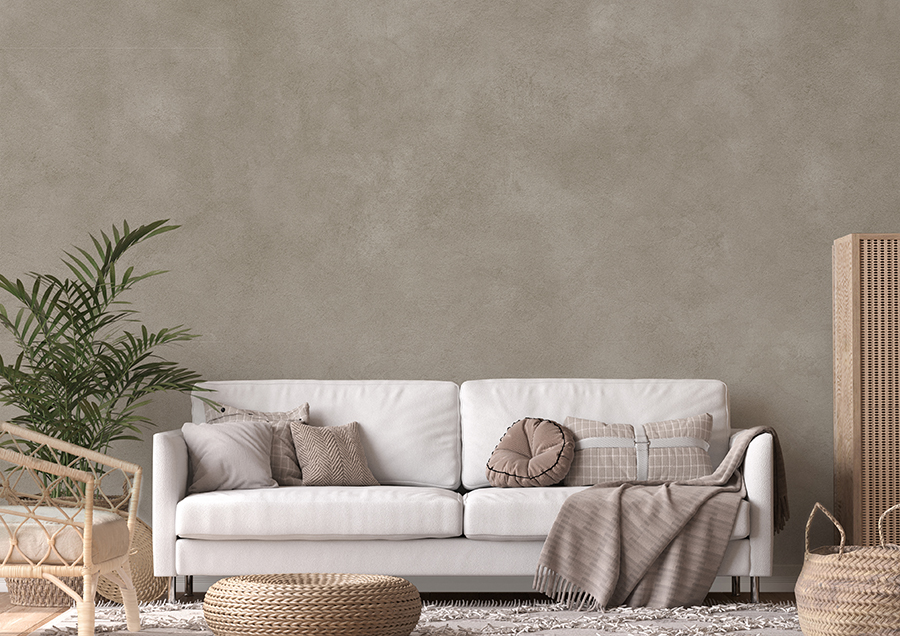
Properties and advantages of lime mortars
For some years now, the use of lime mortars and stuccos has spread at the speed of light. The promotion of bioconstruction is to blame for this, although in reality these are materials that already boast a vast tradition in the sector. Products that have traditionally been used in construction, being relegated to the background after the proliferation of cement and derivatives.
Ecological awareness has put them back in the front row, gaining popularity every day in restoration, construction, theming, and heritage.
Next, we develop the main properties and advantages that once again put lime mortars in the spotlight to the detriment of other decorative coatings.
It is a biodegradable product
It is an ecological material and respectful with the environment, since it is nourished by elements from nature itself.
It acts as a natural fungicide and disinfectant
Product that is defined by a high level of alkalinity, which leads to lime acting as a natural disinfectant and fungicide. In this way, its high pH prevents the appearance of typical mold stains as well as the proliferation of fungi and harmful bacteria for human health.
Resistant to weather phenomena
The different weather conditions do not affect the resistances of lime mortars. Their tolerance to humidity, rain, and UV rays is more than proven. Hence, it is one of the most recommended materials to apply outdoors.
Material with less shrinkage and cracking
Compared to more classic mortars, lime ones boast lower shrinkage and cracking. An added value that consequently causes the creation of coatings that neither crack nor fissure, thus exponentially extending their useful life.
Very workable and breathable mortar
The lime that makes up this type of mortar allows the absorption or disposal of water. In summary, it prevents the humidity level from skyrocketing by regulating it at all times. Likewise, it is a mortar that has nothing to envy at all to those only formulated with cement. It can be achieved, and in fact there are, very plastic lime mortars, easy to work with and workable.
Provides very durable aesthetic finishes
The decorative finishes that are achieved are very durable. Spaces are beautified by creating textures and very varied effects with the hardness practically of a rock.
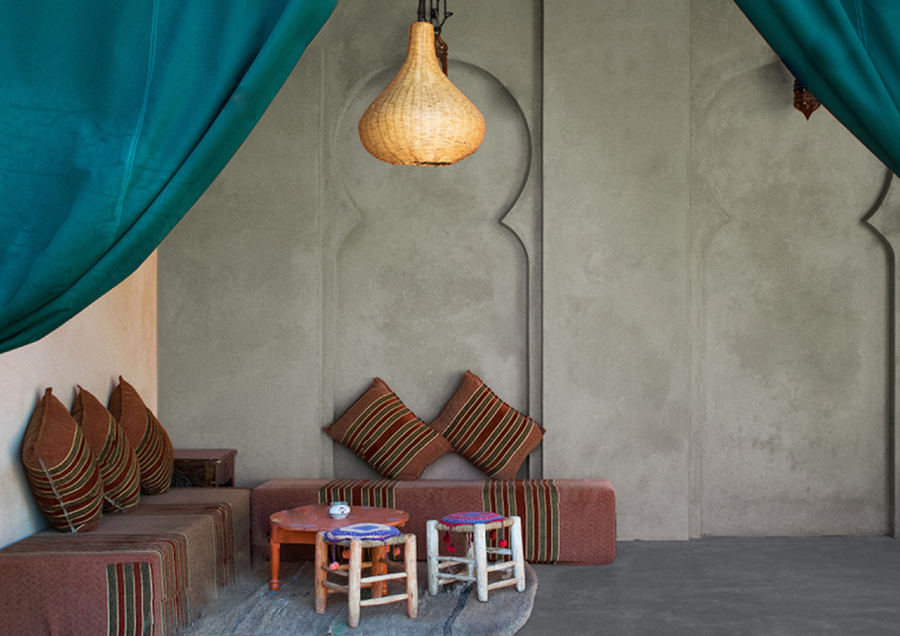
What is lime mortar used for: main fields of application
It constitutes one of the most used mortars in rehabilitation and restoration works of heritage buildings, but also in new constructions and as a decorative coating for homes, premises and businesses.
In summary, these are the most widespread uses of lime mortar:
Old masonry or ceramic blocks.
Wall recovery and regrouting.
Wall sanitation: complete or just the joints
Protection of walls located in very humid environments: to solve salinity problems, especially, in walls that have capillary rise.
Vaults and pavements.
Focused, stuccos, tadelakt, etc.
Traditional plasters with rough finishes.
High decorative value coatings: with finishes in gloss, matte, floated, etc.
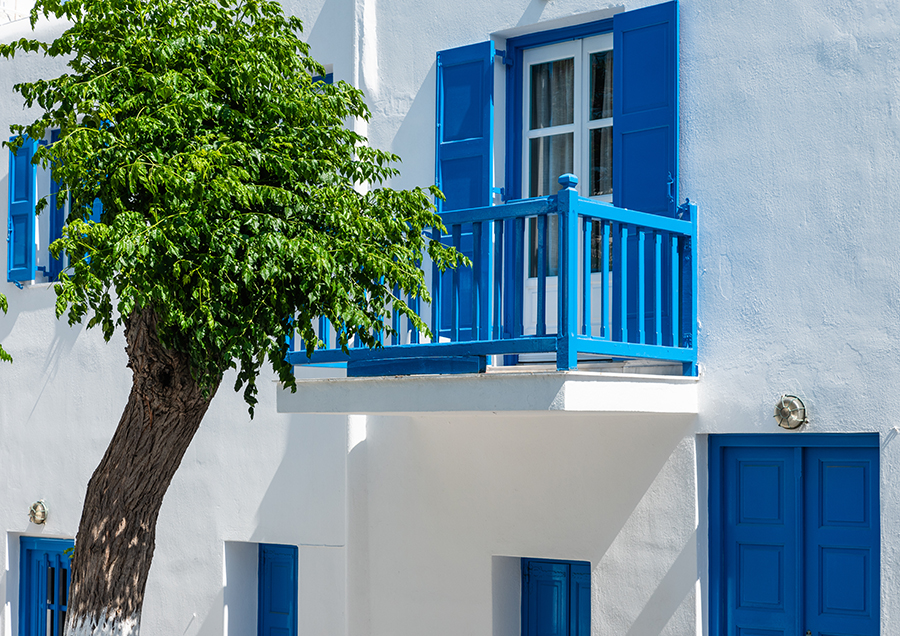
Types of lime mortars that exist
In fact, lime bikers are nothing more than industrial mortars that have been dosed, mixed and kneaded with water in factories to be distributed to the place of use. There are several types, we are going to make a classification according to the setting procedure and composition.
Aerial lime mortars
The hardening of this type of mortars is done by its contact with the air, from the outside to the inside, which causes the process to be a bit slower. Likewise, they are somewhat more vulnerable to various weather conditions.
Hydraulic lime mortars
On the contrary, the hardening of hydraulic lime mortars is not affected or conditioned in humid environments. Therefore, they harden when in contact with air and water in the same way. It can be obtained naturally, directly from the stone, or manufactured industrially. Compared to aerial limes, these mortars confer higher resistances in much less time.
Likewise, we can establish another differentiation of this type of mortar depending on whether it is combined with sand or water.
Lime and sand mortars
The mixing proportions depend on the field of application, so they vary in this regard. For plastering, for example, one part of lime will be used for one part of sand; while for rendering it will be done with one part of lime for two parts of sand. A correspondence that will continue to be unbalanced if this mortar is chosen for brick walls (1 part of lime for 3 parts of sand) or for masonry walls (1 part of lime for up to 4 parts of sand).
Cement and lime mortars
Similarly, the mixing of lime and cement with water is subject to the application that is going to be granted to this mortar. It is very important to emphasize that the amount of water to be used must be limited to strictly necessary, since if there is an excess it will evaporate, therefore reducing the resistance of the mortar and, if there is little, working the mass and placing it afterwards will be more complicated.
Having said that, next we are going to mention some examples of actual mixing proportions:
For loaded and/or waterproof walls: 1 part of cement + 1 part of lime + 6 parts of water.
For lightly loaded walls instead: 1 part of cement + 1 part of lime + 8 parts of water.
For foundations: 1 part of cement + 1 part of lime + 10 parts of water.
Para revoques que sean impermeables: 4 partes de cemento + 1 parte de cal + 12 partes de agua.
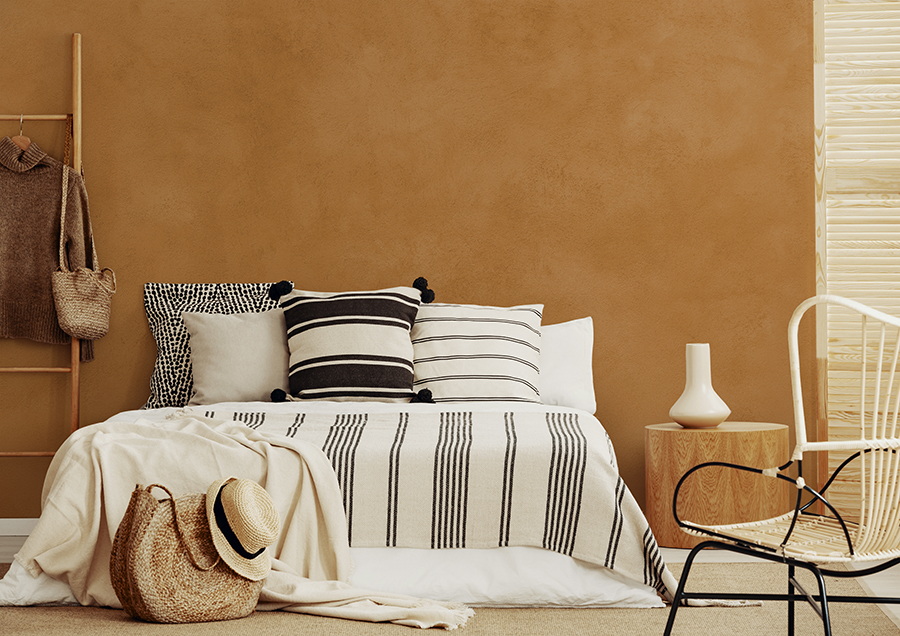
How to make a lime mortar step by step
The combination of the different compounds that make up the future mortar must be carried out just when it is going to be applied on the corresponding surface, floor or wall. A mixture of materials that is carried out through an industrial mixer in most cases, although it is also possible to do it by hand. Now, we move on to detail the step by step to make a lime mortar.
Step 1: Calculate the proportions of the mix
To start, it is necessary to accurately calculate the parts needed of each component (lime, cement, water, sand, cement) depending on the type of lime mortar and the use and field of application that will be given to it.
Step 2: Mix the aggregates to prepare the mortar
Next, it is necessary to mix the different aggregates that make up the mortar in question. Sand is one of the most common materials, but there are also those who replace it with others such as gravel. Mix everything following the exact formula of the proportions previously calculated, some of which have been specified in previous paragraphs.
Step 3: Apply the lime mortar
Once the materials are perfectly mixed and the lime mortar has dried, it is time to apply it. Experts recommend placing it in a way that it expands on the top. The longer the mortar takes to dry, the greater resistance and durability it will guarantee to the support.
Tip! To achieve a lime mortar that dries faster, it is better to use hydrated lime in the mix. Why? Because this lime reacts with water forming crystals and, these crystals, provide partial hardening thus accelerating the settling of the mortar.
It is applied just like a traditional plaster mortar. Therefore, once the desired mixture is obtained, apply it on the vertical wall or pavement with the help of a trowel.
Lime mortar finishes: one of the fastest growing deco trends
Although lime mortar is a building material that has been used since the last century, it has been in recent years that its use has grown exponentially to become one of the most popular decorative trends. An unstoppable progression that is framed in the social, economic, and political context aimed at achieving a more sustainable planet for some time now and that is accentuated by the future, but at the same time close, horizon of the 2030 Agenda.
An environmental awareness that has led to the rise of bioconstruction and, consequently, has also boosted the commitment to this coating. A coating that has been with us practically all our lives decorating floors and walls, in interior and exterior spaces.
A lime mortar that is past but also present and, above all, future. We have moved from the oldest, more millennial techniques, to the making of more modern mortars that have variations depending on the use they want to give them as well as the wide range of finishes they allow. Any decorative style is possible.
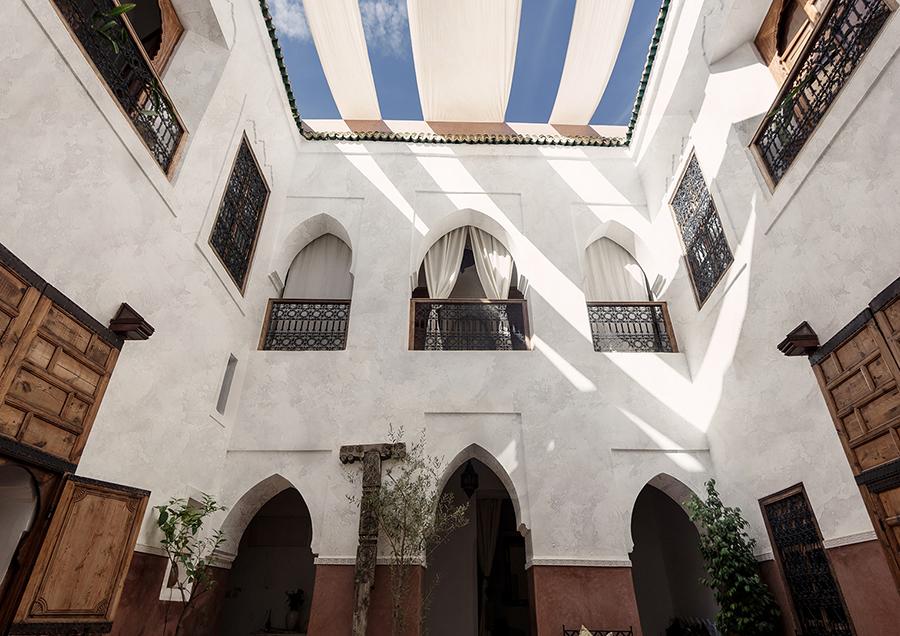
Most widespread lime mortar colors
Without color, there is no shape; nor is there shape without color. Both concepts feed back, merge to offer a wide range of colors. And in the end, a lime mortar is nothing more than a continuous color coating. A harder, more resistant coating, with less shrinkage and, also, more ecological.
The catalog of shades is immense, it has no end. Thus, distinctive finishes can be created for walkable and non-walkable surfaces, vertical and horizontal, in indoor and outdoor spaces. From more earthy scales, reminiscent of the earth, the matrix and origin from which this building material arises; through the sophistication and minimalism of grays; to reach more lively chromatic varieties that fit the new trends: ochres, yellows, oranges, reds, blues, greens, etc.
Lime mortar for facade rehabilitation
The facades, being outdoors, are constantly exposed to different weather conditions: rain, heat, cold, wind... as well as the inexorable passage of time, which sooner or later ends up taking its toll. Over the years it is inevitable that the facades deteriorate and age, making it necessary to carry out some type of renovation to make them look lustrous again.
For these purposes, lime mortar is a very competent material to rehabilitate all types of facades, even those of the most emblematic and old buildings to achieve a highly decorative coating.
A product that will beautify the facades again while increasing their chemical and mechanical resistances. Benefits to which must be added the high pH of the lime mortar, which prevents the growth of fungi, mold and derivatives on the walls.
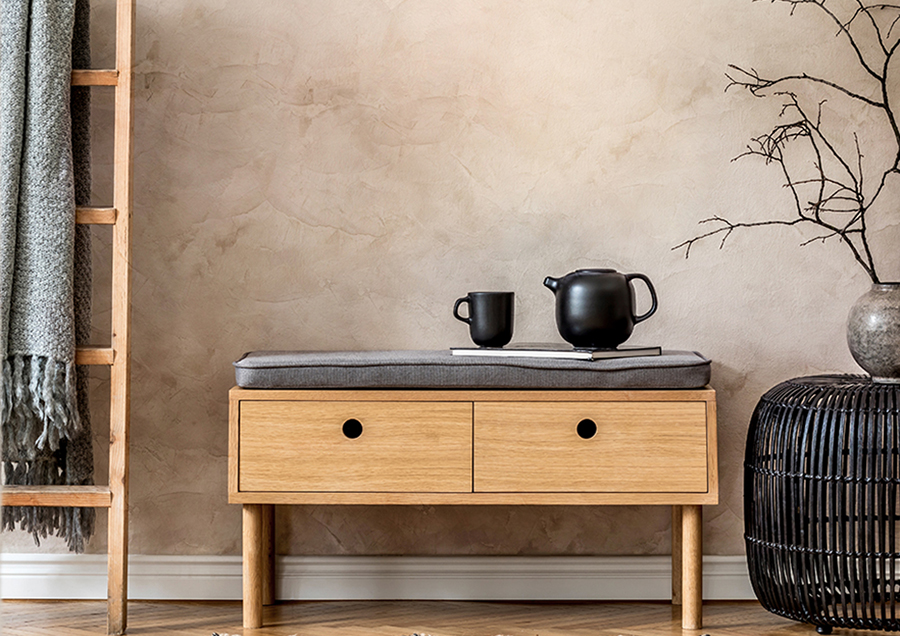
Natture, the new lime mortar from Topciment
At Topciment® we are also driven by environmental awareness, hence our strong commitment to developing coatings with which to contribute our small grain of sand. In that scenario is Natture, amicrocement tadelakt appearancewith which we gradually delve into a more sustainable line. A decorative solution that perfectly fits the demands of the sector and the current context we are going through in which reducing the ecological footprint is fundamental.
Natture is a lime mortar designed to decorate floors and walls, indistinctly in indoor and outdoor spaces. A two-component microcement that stands out for its variety of finishes, imitating not only the appearance of stucco most similar to tadelakt, but also exposed concrete. A product with a natural and handmade appearance that is reviewable, thus playing with countless textures.
Among its benefits compared to other materials, the following must be highlighted:
Continuous coating of low shrinkage that does not crack.
Applicable on a multitude of supports such as concrete, cement, ceramic or plaster, among others.
Provides a superior workability than other coatings on the market, in addition to being a product that as already mentioned is totally reviewable.
It can be applied with the "fresh on fresh" technique, an option that multiplies the final finishes that can be achieved.
Guarantees a greater hardness and resistances mechanical and chemical.
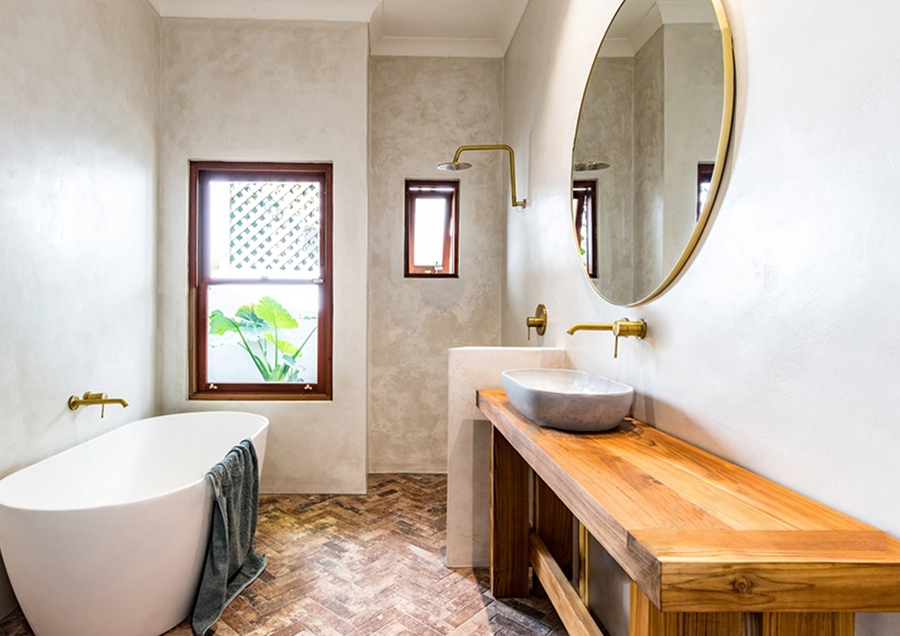
A mixed mortar that combines the best of lime and the best of cement. The result is a product whose hardening is accelerated, as well as its mechanical resistances; it enjoys hydraulic qualities and greater plasticity and workability.
The Natture system encompasses four products that are distinguished by their aggregate size, with the thickest being Natture XL (0.4 mm). A lime mortar initially thought of as a preparation for the support, both floors and walls, although it can also be used as a microcement finish to enhance a rustic style. It is closely followed by Natture L and its 0.3 mm of aggregate, being a product designed to give the same use and application as its predecessor.
As a finishing lime mortar we have on one hand Natture M (0.2 mm) and on the other Natture S (0.1 mm). While the former can be applied both on pavements and vertical walls, the latter is only reserved for walls. The final finishes in both cases are simply spectacular.
If you have any questions about our new lime mortar, do not hesitate to contact us. Write to us at info@topciment.com or fill out thisform. One of our specialist technicians will contact you as soon as possible to tell you all about Natture.
Subscribe to our newsletter
Receive in your email tips for the application and care of microcement, the latest trends and news from Topciment products.




